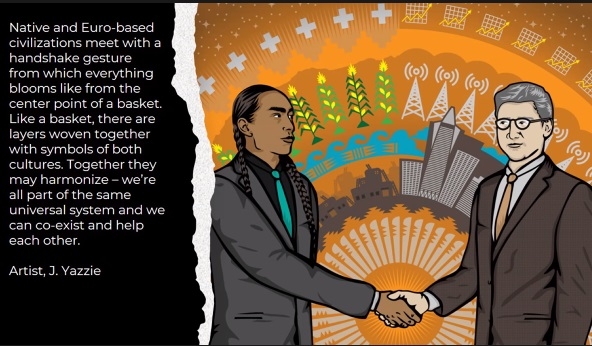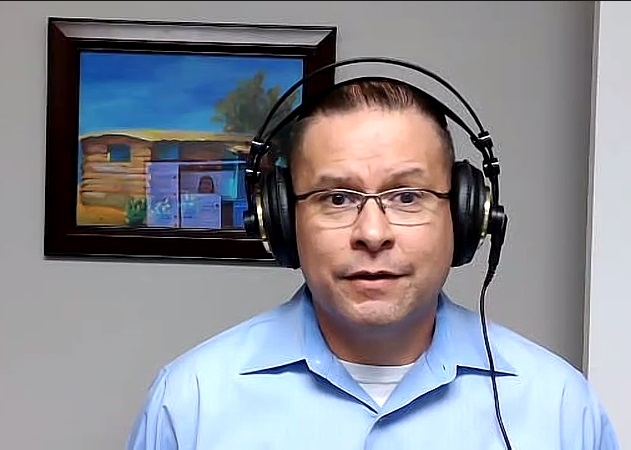
Challenges And Solutions To Home Lending In Native American Communities Presented By NCRC

Bankers from around the nation participate in Redlining the Reservation webinar.
Housing and lending disparities in Native American communities were brought to light in a presentation by National Community Reinvestment Coalition (NCRC) researchers this week.
Federal home loan bankers attended the Redlining the Reservation webinar Tuesday, alongside government officials, lending officers, housing authorities, credit unions and higher education institutions from around the country. Attendees learned how Community Reinvestment Act (CRA) reform can enable Community Development Financial Institutions (CDFIs) and banks to improve their mortgage lending and investment on Native lands.
“Native buyers get disproportionately higher interest rates. Tribal lands receive very little financial investment and have a much higher need than other rural areas,” said Jason Richardson, senior director of research at NCRC.
The Federal Reserve Board, alongside the Federal Deposit Insurance Corporation (FDIC) and the agencies finalized an overhaul of CRA regulations in Oct. 2023. The Final Rule, as it is known, goes into effect April 1, 2024 with a multi year phase-in, and seeks to accomplish several goals. Among them, encouraging banks to expand access to credit, investment and banking services in low- and moderate-income communities, modernizing regulations to accommodate industry changes, and tailoring CRA evaluations and data collection to bank size and type.

“Will banks delay the implementation of CRA reform?” Native Community Capital CEO Dave Castillo posed. “Banks weren’t allowed to serve tribes and now they can. Where are we going to be a year from now, three years, five years from now?”
The changes represent new opportunities for financial institutions to increase their footprint on native lands in a positive way, he added, but they must do the necessary legwork.
“It (CRA reform) presents tremendous opportunities, but only if you pursue them. You can lead, you can follow or you can get out of the way.”
Many Native Americans employed by casinos, restaurants, hotels and essential service providers were highly reliant on the Paycheck Protection Program (PPP) during the pandemic, researchers noted. Additionally, the report says, "little of the PPP lending in tribal areas was conducted through the fintech firms that have since been accused of defrauding the program, indicating that the funds were properly disbursed and used under government program guidelines."
“We need banks to step forward and invest in this space,” Castillo said. “We need a whole ecosystem of support and we’re building it now. We and our native CDFI colleagues around the country need investment capital banks can readily supply. We’re simply asking you to be a part of a success story we can write together.”
There are currently 19 tribally-owned banks around the nation and more than 170 lenders are approved to facilitate the U.S. Department of Housing and Urban Development’s Sec. 184 Indian Home Loan Guarantee Program. Still, only several-hundred loans are made on Tribal Trust Lands each year.
“The Navajo Nation has five banks to serve the needs of 250,000 people in an area the size of West Virginia,” said Dr. Bruce Mitchell, NCRC’s principal researcher. “Less than one cent for every dollar loaned in other areas were loaned in tribal areas."
Loans for manufactured homes are far more common – and more expensive for borrowers – on native lands, according to the NCRC’s report.
The latest data released by the Bureau of Indian Affairs (BIA) indicated that about half of all purchase loans made on tribal lands between 2018 and 2021 were for manufactured loans.
About 85% of those loans were done by Vanderbilt Mortgage and 21st Mortgage – both of which are owned by Berkshire Hathaway.
The NCRC report makes five policy recommendations, asking the FED to stop allowing the Government-sponsored Enterprises (GSEs) to neglect their legal obligation to provide a secondary market for manufactured home loans.
“Where we are today, neither banks nor the GSEs are serving tribes in a way that is compliant with the historic version of the CRA,” Castillo pointed out.
Home lending is inherently more complicated in what is known federally as Indian Country, due to the fact that the government holds these lands in a trust relationship with tribes and the BIA's handling of title records and status reports.
“Homeownership access is difficult in tribal areas because the land can’t be loaned outright; it involves long term– often 100-year leases, which can be quite complex,” Mitchell said.
A previous version of this article falsely reported that the NCRC report found high fraud rates in Arizona and New Mexico during the pandemic. This version has been corrected to reflect the accurate report.




